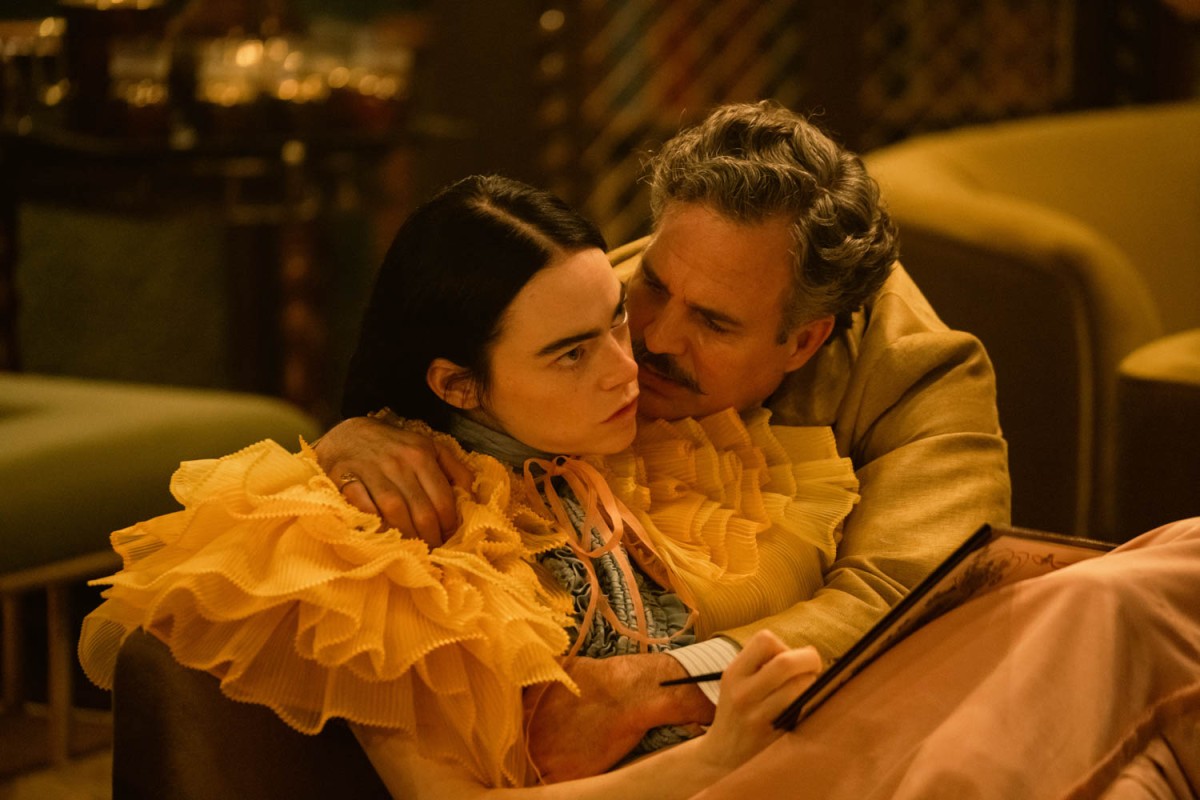Greek filmmaker Yorgos Lanthimos channels all his psychotic energy and deadpan humor into his newest oddball caper, “Poor Things.” The film, which recently premiered at the 61st New York Film Festival at the Film at Lincoln Center, was one of the most talked about in this year’s circuit, drawing praise and polarizing critics alike.
“Poor Things,” based on Scottish writer Alasdair Gray’s novel of the same name, follows Bella Baxter (Emma Stone) after unorthodox scientist Godwin Baxter (Willem Dafoe) replaces her brain with her unborn infant’s. The film primarily explores Bella’s journey of self-discovery, sense of rebirth and sexual liberation as she deals with modern society’s harsh realities of corruption and greed against her innate, innocent empathy. Stone couples physicality — visualized by an evolution from walking a toddler to moving like a fully grown woman — with wonderfully comedic line delivery.
Dafoe’s portrayal of Godwin raises thought-provoking, albeit ridiculous, questions regarding scientific ethics and the cost of progress. His seemingly stone-cold stubbornness is challenged both by Bella’s contagious innocence and the inherent humanity found in his assistant Max McCandles (Ramy Youssef). Youssef offers a truly nuanced performance that, similar to Stone and Dafoe, is able to add life to Lanthimos’ deadpan comedy. The admittedly wholesome dynamic between the three lead characters is often challenged either by Bella’s obsession over self-discovery or hysterical characters like attorney Duncan Wedderburn (Mark Ruffalo) who force themselves into the trio’s lives.
Like Lanthimos’ previous films, the star of the show in “Poor Things” is its production design. Production designers James Price and Shona Heath craft vivid worlds — scenes that are somewhere between a transcendent magical realist painting, a technicolor dream and grotesque anatomical sketches. The visual style is refreshingly cohesive for two production designers who hadn’t even met prior to the film.
At the NYFF press conference, both designers talked about their respective roles in fleshing out Lanthimos’ twisted vision. Price, who is more experienced working in feature films, focused on building grand, immersive composite sets. Heath, who has worked on smaller projects — like fashion campaigns for Jo Malone and Dior — focused on the finer details of the fictional cityscapes. Heath described their unorthodox approach to set design as Price working from the “top down,” while she worked from the “bottom up,” eventually meeting in the middle to create a set of fully realized cinematic worlds.
The film’s alluring cinematography further elevates its magnificent production and costume design. Robbie Ryan, who notably shot Lanthimos’ “The Favourite” (2018) and Noah Baumbach’s “Marriage Story” (2019), delivers a mesmerizingly photographed piece in “Poor Things,” capturing haunting skies and incredible sets. Ryan implements both black-and-white photography and color into the film, making nearly every frame into a beautiful work of art.
The film’s sound design by Johnnie Burn — who worked on Lanthimos’ previous films including “The Lobster” (2015) and “The Killing of a Sacred Deer” (2017) — is nothing short of rocking and immersive. This overwhelming auditory experience balances a somewhat-soothing-yet-crazed orchestral score by Jerskin Fendrix. The sound and photography work hand-in-hand to craft an effective atmosphere, aesthetic and tone, making for a visceral journey for Bella’s character.
While the film does touch on a myriad of political themes, it sometimes glosses over these issues shallowly, using them as decorative set pieces to ground the film in a skewed historical reality. While Bella’s character represents female emancipation from rigid social structures, not just as objects of male desire, her political interest in socialist dogma feels underdeveloped and purely aesthetic. This was ultimately a cheap way for the film to establish Bella as a modern woman while vaguely referencing real-world, 20th century historical developments.
Similarly, the film’s attempts to depict colonial suffering — the inclusion of Alexandria’s squalid slums, and the oppressive estate of General Blessington (Christopher Abbott) — feel orientalist and an oversimplification of the horrors of Western imperialism. While it may not be Lanthimos’ intention to tackle all these nuanced ideas with depth, their underdeveloped inclusions in the film feel forced, and at times, distracting.
Unlike Lanthimos’ last feature-length film “The Favourite,” an 18th-century English costume drama, his newest project is not temporally bound to a given era. It is inspired by a wide range of art, and ultimately presents dizzying psychedelia and dreamy futurist forms. As Bella traverses the high seas, hopping from one continent to the next, the film also transports viewers to abstracted interpretations of iconic, real-world cities. The result is a stilted reality, far more jarring and immersive than any of the director’s previous films. While the performances do conform to Lanthimos’ vision of a surreal world full of eccentric caricatures, it is ultimately the physical environment depicted that is responsible for letting performers disappear into the film’s surreal realm.
“Poor Things” achieves a striking balance between ridiculous and haunting. The film remains focused and independent of itself in the face of its narrative ambition and seemingly limitless creativity, revealing a heart somewhere beneath all that weird, semi-dystopian presentation.
“Poor Things” will be screening at the Walter Reade Theater during New York Film Festival on Oct. 12 and Oct. 15.
Contact Mick Gaw and Yezen Saadah at [email protected].

























































































































































